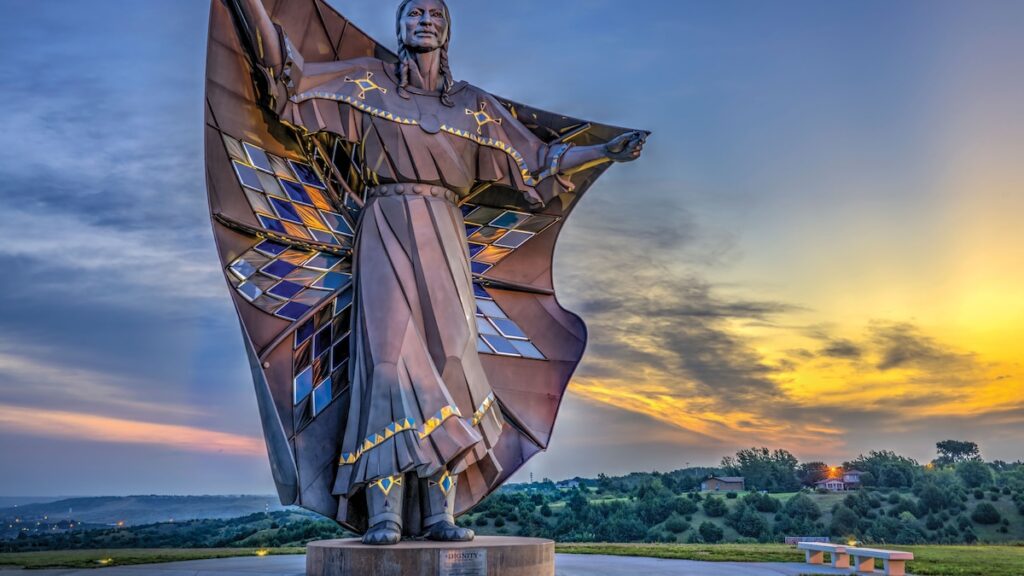This article was produced by National Geographic Traveler (UK).
Whether it’s planning North America’s newest national monument (surrounding one of its greatest natural wonders) or reimagining museum exhibits, the country’s visitor attractions and experiences are more likely than ever to be shaped and guided by Indigenous peoples. From the Great Plains to the California coast, you can encounter a wide variety of cultures across the continent.
1. Native Dakota
Indigenous traditions in the United States date back some 12,000 years before the Stars and Stripes. More recently, there has been a rise in travel experiences where Native American communities showcase their culture in unique ways. One such tour focuses on the less-explored states of North and South Dakota. Travel company Trafalgar’s new nine-day itinerary around the Dakota’s national parks and Native American trails takes in the weathered landscapes and bison habitats of the Badlands and Theodore Roosevelt National Parks, as well as historic sites such as the memorial to the 1890 massacre at Wounded Knee. But at the heart of the program, designed in collaboration with Native tourism officials, are the four Indian reservations of the Oglala Lakota and fellow tribes, some of which are hosting tour groups for the first time. It’s a chance to learn directly from Native communities, whether it’s learning star lore from a Lakota elder or learning a cultural dance from the MHA tribe. Tour prices start from GBP 2,925pp.
2. West Coast Museums
California is especially rich in diversity of indigenous cultures, with several new centers being established to learn more about the indigenous peoples of the Pacific coast. The Agua Caliente Cahuilla Indian Museum is due to open in Palm Springs later this year as part of a cultural plaza that includes a hot springs spa featuring traditional healing techniques. A museum for the Santa Ynez Chumash Tribe near Santa Barbara is also nearing completion.
3. Oklahoma Ancestors
The Museum of First Americans opened in 2021 in Oklahoma City, the capital of a state with 39 Native American nations. The museum features two permanent exhibits brought together by an all-Native curatorial team: one tells the stories of Oklahoma’s various peoples and their ancestral homelands, and the other displays artifacts such as beaded coats and drums in a new way that diverges from traditional museum-style displays in the Smithsonian’s collections.

The Colorado River flows along the eastern border of Arizona’s new Baaji-Nawajo-Ita-Cucuveni National Monument.
Photo by Amy S. Martin
4. Grand Canyon Monument
The newest national monument, Baaji Nawajo Ita Kukuveni (Grand Canyon Ancestral Footprints), was designated in August. The monument protects nearly one million acres of deep canyons, pine forests and sagebrush prairies adjacent to the landmark. This culturally significant landscape is managed under the co-management of a coalition of Arizona Indian tribes.
5. Route 66 reinterpreted
The American Indian and Alaska Native Tourism Association (AIANTA) has created a free digital guide for drivers between Chicago and Los Angeles to raise awareness of the rich indigenous culture along North America’s most famous road trip. Highlights include the Cahokia Mounds, a Mississippian culture city dating back to 700 AD, and the equally ancient but still inhabited Pueblo settlements of New Mexico.
Featured in the November 2023 issue of National Geographic Traveler (UK).
Click here to subscribe to National Geographic Traveller (UK) magazine (only available in some countries).


